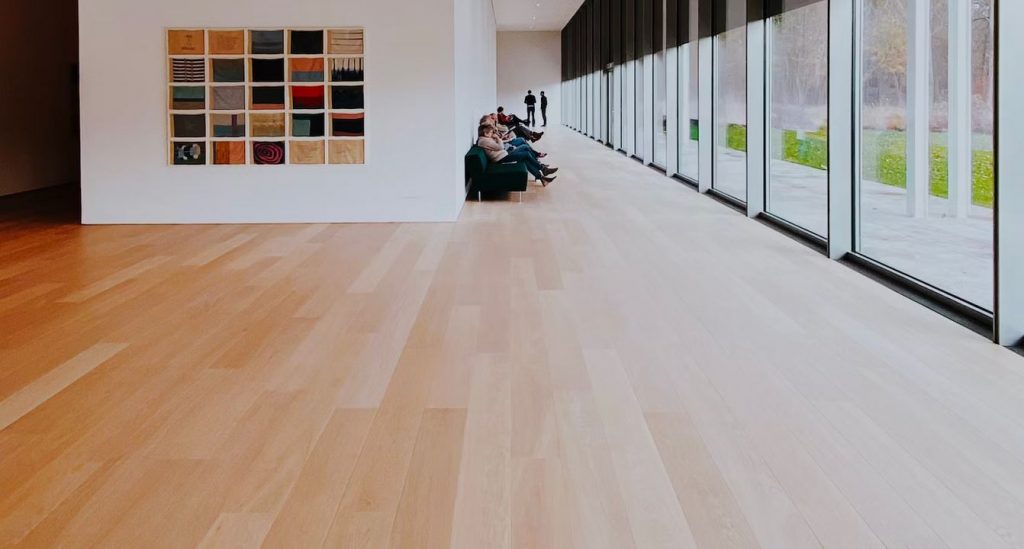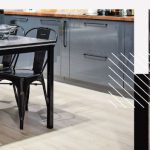Glue-down vinyl plank flooring is a popular choice for homeowners seeking a blend of style and durability. However, to ensure its long-lasting beauty and longevity, diligent care and maintenance are essential. This comprehensive guide will explore detailed best practices for preserving your investment and keeping your glue-down vinyl plank flooring in top condition.
By incorporating these detailed maintenance best practices into your care routine, you can preserve the aesthetic appeal and durability of your glue-down vinyl plank flooring. Consistent and conscientious care will not only extend the lifespan of your floors but also protect your investment for years to come.
Why Maintenance Matters
Routine cleaning and maintenance make a major difference. With consistent care, glue down vinyl flooring can retain its beauty for 20 years or longer before replacement is needed.
Benefits of Proper Maintenance
-
Saves money from avoiding premature floor replacement
-
Prevents safety hazards from degraded or damaged flooring
-
Maintains healthy indoor air quality by preventing mold, odors
-
Enhances home aesthetics, visual appeal for better enjoyment
-
Potentially increases resale value from well-kept floors
Consequences of Neglect:
Estimated Average of Floor Buying/Replacement Source: HomeAdvisor
-
Shortens flooring lifespan, requiring earlier replacement
-
Leads to preventable damage like scratches, stains, and dents
-
Can void warranties due to lack of care documentation
Saving money and avoiding frequent flooring replacements starts with daily habits. Small efforts make massive differences over years of use. This can ensure your house design is forever timeless even with style changes.
Key Maintenance Tips
Follow these best practices for keeping your floors fabulous.
1. Sweep and Vacuum Frequently
Dirt and surface grime is the first enemy of well maintained floors. Sweeping and vacuuming regularly stops dirt build-up and maintains aesthetics of floors.
-
Sweep, dust mop, or vacuum daily to prevent buildup of grit that can rapidly scratch floors.
-
Over 80% of scratches result from particles tracked inside a home according to Shaw Flooring. Stop dirt at the door with doormats.
-
Use soft brush vacuum heads to avoid scuffs during debris removal. Adjust height to avoid pulling planks.
-
Clean under furniture, appliances, and mats weekly where debris collects.
-
Schedule seasonal deep cleaning services to sanitize and fully clean floors.
Tips for Vacuuming
-
Empty canisters when half full to maximize suction
-
Replace filters every 6-12 months per manufacturer
-
Check bristle height to prevent flooring damage
-
Wash microfiber pads that come with vacuum
Prevent dirt from entering by using doormats and promptly removing debris.
2. Clean Spills and Stains Quickly
Liquid spills are inevitable, but stains don’t have to be.
-
Blot spills immediately using a clean, dry towel. Don’t rub, which can spread the stain.
-
Spot clean pet accidents with an enzyme cleaner made for hard surfaces. This breaks down uric acid crystals to remove odors.
-
Gently scrape dried spill residue before cleaning. Harsh scrubbing can harm the vinyl wear layer.
Catching stains early is crucial for preventing long-term damage. Long term damage can be prevented by addressing spills within the first 24-48 hours.
3. Protect Floors from Furniture Damage
Heavy furniture sliding across vinyl plank flooring can gouge the vinyl surface. Safeguard your floors:
-
Use furniture pads under chair and table legs and corners. Felt pads prevent scratches. Rubber protects against shifting.
-
When moving furniture, lift items instead of sliding them.
-
Rearrange area rugs and furniture periodically to allow even exposure to sunlight and prevent permanent indentations.
Most floor damage results from moving furniture without protection. Shield your investment. Be sure to take care when moving furniture.
Comparison of Recommended Floor Protection Products
|
Product |
Pros |
Cons |
|
Felt pads |
Inexpensive, prevent scratches |
Can fall off furniture legs, slide |
|
Rubber pads |
Grips to prevent shifts, reuse |
Cost more upfront |
|
Rugs |
Soften impacts, decorative |
Can trap moisture, need laundering |
4. Maintain Finish and Shine
Over time, vinyl plank floors lose their luster from dirt, grime and foot traffic. Refinish occasionally to restore beauty.
-
Sweep and mop floors prior to adding any finish. Filth under finishing products causes buildup.
-
Apply thin, even layers of water-based sealers and polishes made specifically for vinyl plank floors. These maintain shine while allowing floors to “breathe”.
-
Let finishes fully dry between coats. Humidity lengthens drying. Allow extra time to cure and harden protection.
By following these steps carefully, you can successfully refinish your vinyl plank floors and restore their original beauty. Achieving a stunning and long-lasting finish relies on thorough cleaning preparation, the use of appropriate products, careful application, and patience during the drying process. Regular maintenance thereafter will ensure that your refinished floors continue to shine for years to come.
Caring for Your Floors Over Time
While heavy use and accidents happen, don’t despair. Some remedies can help.
-
For damaged planks, most vinyl flooring allows replacements. Cut out and swap individual planks as needed.
-
Excess moisture under floors leads to bubbling planks. Immediately address leak sources and increase ventilation to prevent further damage.
Most floor repairs involve fixing install or moisture-related issues. Handle problems promptly to avoid bigger headaches.
Frequently Asked Questions (FAQs)
How often should I clean vinyl plank flooring?
Aim to sweep daily, mop weekly, and deep clean every 1-2 months. Clean spills ASAP.
What removes vinyl plank flooring stains?
Gently scrape dried stains, then use damp microfiber mops and vinyl floor cleaners to remove residue. Avoid harsh scrubbing.
Can steam mops be used on vinyl plank flooring?
No – excess moisture under vinyl planks causes damage over time. Stick to dry mopping methods.
Concluding Thoughts
Caring for glue-down vinyl plank floors is essential not only to preserve their aesthetic appeal but also to prevent the need for costly premature replacements. By adhering to a proactive and thorough maintenance routine, you can protect your investment and ensure the longevity of your floors for years to come.
Conduct regular inspections of your vinyl plank floors to identify potential issues early on. Look for signs of water damage, uneven wear, or changes in color. Detecting problems in their early stages allows for timely intervention, preventing more extensive and costly repairs.
By committing to these proactive measures, you can ensure that your glue-down vinyl plank floors remain both fabulous and durable, even in busy households. This conscientious approach to maintenance will not only enhance the visual appeal of your floors but also extend their lifespan, ultimately protecting your investment.



